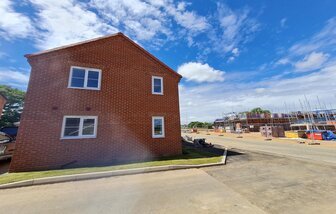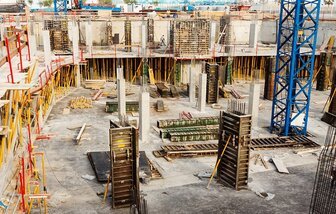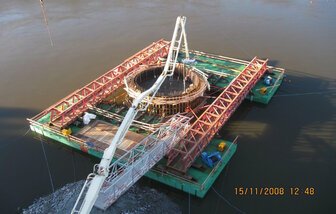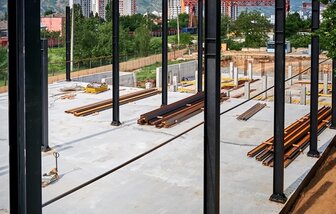Understanding Trench fill Building Foundations: Everything You Need to Know
A trench fill building foundation is a type of foundation commonly used in construction to support the load of a building. It offers advantages such as cost savings, time efficiency, improved stability, enhanced insulation, and reduced risk of water ingress. However, considerations such as site conditions, building design, building regulations, water table levels, and professional expertise should be taken into account. This ensures a solid and reliable foundation for your building project.
What is a Trench fill Building Foundation?
A trench fill building foundation is an essential type of foundation commonly used in modern construction. This method involves excavating a trench along the perimeter of the building and filling this trench with concrete.
Unlike traditional strip foundations, which are narrower and require more extensive excavation, trench fill foundations provide a wider base of support and stability.
Design and Construction of Trench Fill Foundations
Trench fill foundations consist of a continuous concrete strip that runs all around the building’s perimeter. This design is typically wider than its traditional counterparts and is formulated to fill the entire trench excavated specifically for the foundation.
The depth of the trench is determined by various factors, including the load-bearing capacity of the soil and the structural requirements of the building itself.
The Importance of Reinforcement in Trench Fill Foundations
To enhance the strength and stability of a trench fill foundation, reinforcement bars, commonly referred to as rebar, are often utilized within the concrete strip.
The rebar is strategically placed to reinforce sections that may experience higher loads or stresses, ensuring that the foundation can adequately support the weight of the building.
This approach not only improves durability but also helps in distributing loads evenly across the foundation.
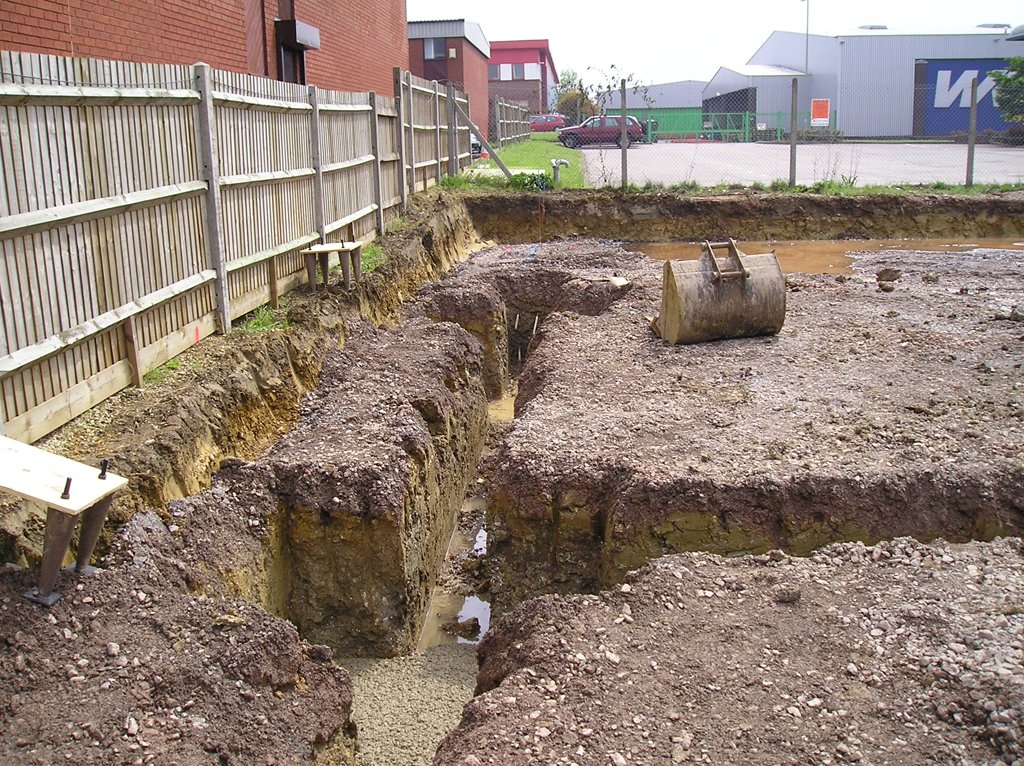
Trenchfill building foundations offer several advantages over other types of foundations:
- Cost-effective: Trenchfill foundations require less excavation and use less concrete compared to strip foundations, resulting in cost savings.
- Time-efficient: The simplicity of the trenchfill method allows for faster construction, reducing overall project timelines.
- Improved stability: Trenchfill foundations provide a more stable base for the building, reducing the risk of settlement or subsidence.
- Enhanced insulation: The larger volume of concrete in trenchfill foundations helps improve thermal insulation, leading to energy efficiency benefits.
- Reduced risk of water ingress: By extending below ground level, trenchfill foundations can help prevent water from seeping into the building.
While trenchfill foundations offer numerous advantages, there are a few important considerations to keep in mind:
- Site conditions: The suitability of trenchfill foundations depends on the soil conditions and the load-bearing capacity of the ground. It is crucial to conduct a thorough site investigation before opting for this type of foundation.
- Building design: Trenchfill foundations may not be suitable for all types of buildings. The design and structural requirements of the building should be taken into account to ensure the foundation can adequately support the load.
- Building regulations: Local building regulations and codes may have specific requirements for foundation design and construction. It is essential to consult with a qualified engineer or architect to ensure compliance.
- Water table: If the site has a high water table, additional measures may be needed to prevent water infiltration into the trenchfill foundation.
- Professional expertise: Trenchfill foundations should be designed and constructed by experienced professionals who have the necessary knowledge and expertise in foundation engineering.
When it comes to constructing a building, the foundation is a crucial element that determines the stability and longevity of the structure. There are various types of building foundations available, and one popular option is the trenchfill foundation. While trenchfill foundations have their advantages, it is essential to consider their disadvantages as well. In this article, we will explore some of the drawbacks of trenchfill building foundations.
1. Cost
One of the significant disadvantages of trenchfill building foundations is the cost. Compared to other types of foundations, such as strip foundations or pad foundations, trenchfill foundations can be more expensive to construct. This is primarily due to the larger volume of concrete required to fill the trench, as well as the additional labor and materials needed to support the walls of the trench during construction.
2. Time-consuming
Another disadvantage of trenchfill building foundations is that they can be time-consuming to construct. The process involves excavating a deep trench along the entire perimeter of the building, which can take a considerable amount of time, especially if the soil conditions are challenging. Additionally, the curing time for the concrete used in the trench can further delay the construction timeline.
3. Limited flexibility
Trenchfill building foundations offer limited flexibility in terms of design changes or modifications. Once the trench has been excavated and filled with concrete, it becomes challenging to make any alterations to the foundation layout. This lack of flexibility can be a disadvantage if there is a need to modify the building’s design or if there are any unforeseen changes during the construction process.
4. Potential for ground movement
Due to the large volume of concrete used in trenchfill building foundations, there is a higher risk of ground movement. This can occur if the soil beneath the foundation is not adequately compacted or if there are variations in the moisture content of the soil. Ground movement can lead to cracks in the foundation, compromising its structural integrity and potentially causing damage to the building.
5. Lack of insulation
Unlike other types of foundations, such as insulated raft foundations or piled foundations, trenchfill building foundations do not provide insulation. This can result in higher energy costs as the building may be more susceptible to heat loss or gain through the foundation. Additional insulation measures would need to be implemented in other areas of the building to compensate for this lack of thermal efficiency.
6. Environmental impact
The construction of trenchfill building foundations can have a significant environmental impact. The excavation process can disrupt the natural landscape and may require the removal and disposal of large amounts of soil. Additionally, the production and transportation of the concrete used in the foundation can contribute to carbon emissions. It is important to consider these environmental factors when choosing the type of foundation for a building.
While trenchfill building foundations have their advantages, it is crucial to weigh them against the disadvantages. The cost, time-consuming nature of construction, limited flexibility, potential for ground movement, lack of insulation, and environmental impact are all factors that should be carefully considered when deciding on the most suitable foundation for a building project.
Trenchfill building foundations are a cost-effective and time-efficient alternative to traditional strip foundations. They offer numerous benefits, including cost savings, improved stability, enhanced insulation, and reduced risk of water ingress. However, it is important to consider site conditions, building design, building regulations, water table levels, and seek professional expertise before deciding on this type of foundation. By doing so, you can ensure a solid and reliable foundation for your building project.
Soft Strip foundations
Learn about soft strip foundations, a type of shallow strip foundation commonly used in the United Kingdom. Discover how they work, their advantages, and considerations to keep in mind
Trench fill foundation
Trench fill foundations are similar to strip foundations but differ in that the trench is filled with concrete rather than individual concrete or masonry blocks.
Piled foundation
Piled foundations are used when the soil conditions are challenging or when the load on the foundation is particularly heavy. This type of foundation involves driving or drilling deep piles into the ground
What is a raft foundation?
Raft foundations are a popular choice for many construction projects, providing a stable and durable base for buildings. Explore the benefits of raft foundations, the construction process
Piled raft foundation
Piled raft foundations combine the advantages of piled foundations and raft foundations. They involve the use of both piles and a large concrete slab to distribute the load over a wider area.
Caisson foundation
Caisson foundations, also known as pier foundations, are used in areas with a high water table or poor soil conditions. This type of foundation involves drilling or excavating
Pad foundation
Pad foundations, also known as isolated footings, are used to support individual columns or posts. They consist of a single concrete pad that distributes the load from the column to the soil
Building foundation hub
At Total, we are dedicated to providing you with the essential knowledge and resources you need to build a strong foundation in various fields. Whether you are a student, professional, or simply curious a
Ready to start your project?
Let's Work Together
To get started, for general enquiries simply complete the form below. Provide us with your project details, and our team will review your requirements. We will then get back to you with a customised solution that fits your needs. Whether you have a small-scale project or a large-scale development, we have the expertise and resources to handle it. Once we have received your submission, you will receive a confirmation email (Please check all your email boxes)
If you prefer, and have a project in mind and seeking a price you can also send us your project documents and any photographs directly to admin@totalgroundworks.co.uk We will carefully examine your documents and provide you with a competitive quote together with a timescale from inception through to completion for your project.

